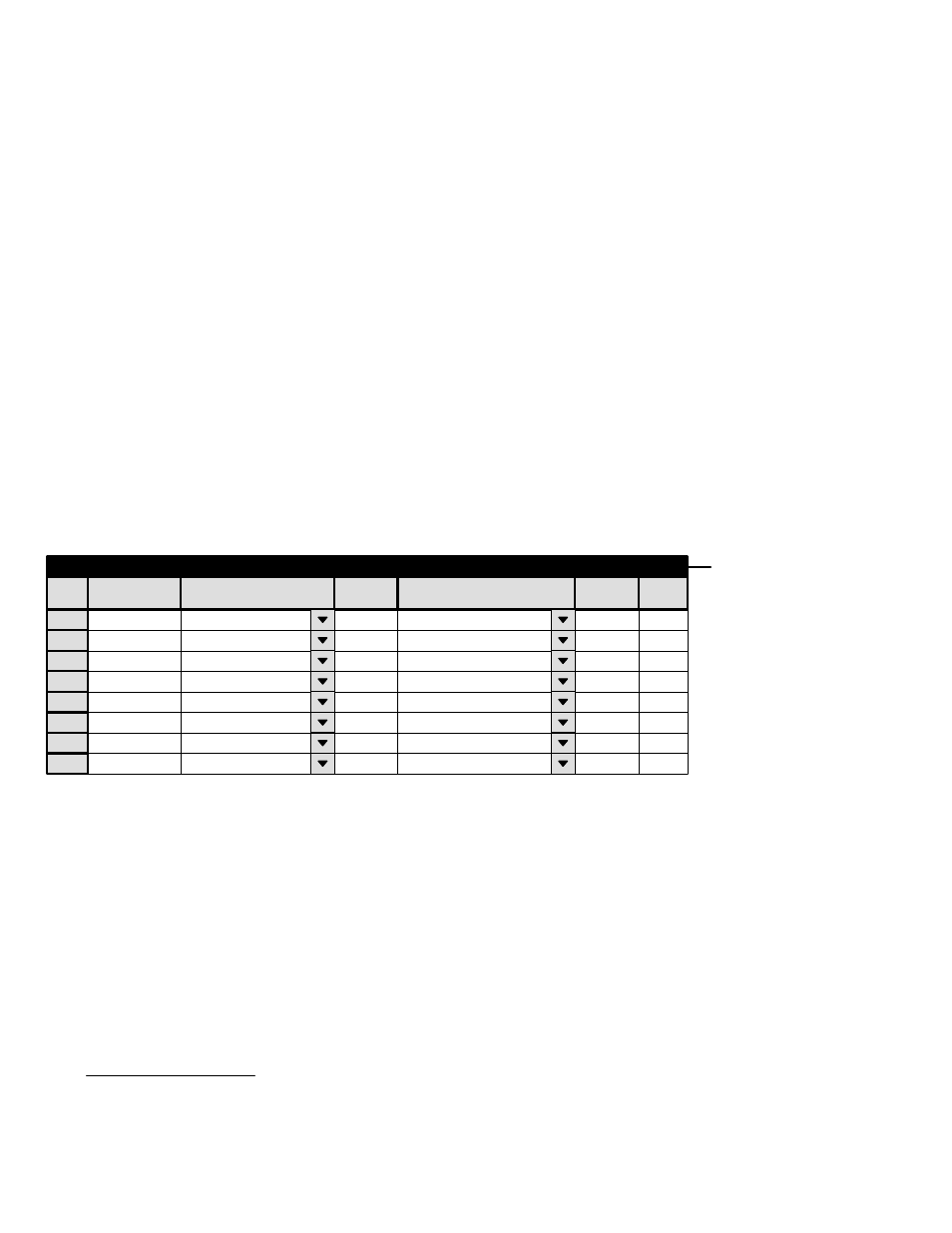Sequential path finding, Path finding – Grass Valley VM 3000 System Controllers v.7.4 User Manual
Page 404

Configurator
Path Finding
5−194
VM 3000 Installation and Operating Manual
Sequential Path Finding
Figure 5−170. Path finding data table (example).
1
Sequential Path Finding
Source Switcher/Level
VIDEO (NEWSROUT)
Physical
10
Destination Switcher/Level
Physical
43
Count
5
2
LEFT (NEWSROUT)
10
43
5
3
RIGHT (NEWSROUT
10
43
5
4
TC (NEWSROUT)
10
43
5
5
VIDEO (MAINROUT)
61
20
3
6
LEFT (MAINROUT)
61
20
3
7
RIGHT (MAINROUT)
61
20
3
8
TC (MAINROUT)
61
20
3
Output
Input
VIDEO (MAINROUT)
LEFT (MAINROUT)
RIGHT (MAINROUT)
TC (MAINROUT)
VIDEO (NEWSROUT)
LEFT (NEWSROUT)
RIGHT (NEWSROUT
TC (NEWSROUT)
Path Finding
Group Name
VNEWMAIN
LNEWMAIN
RNEWMAIN
TNEWMAIN
VMAINNEW
LMAINNEW
RMAINNEW
TMAINNEW
Switcher Description
Control Panel Sets
Machines
TCS−1 Device Codes
Status Display Header
Tally
Path Finding
Exclusion
The path finding
§
software option allows two or more TVS/TAS 2000, Venus, or later routing switchers to operate as a system,
where one switcher can access the other’s inputs through a number of tie lines. For example, Figure 5−171 shows a facility
with a large, central distribution switcher and a smaller switcher normally used only within the news department. By placing
both switchers under control of the Jupiter system, and by adding tie lines, the main router can access the news department’s
inputs. In this example, VT21 can be switched to output 55 of switcher “MAINROUT” with one command: the system will
first switch VT21 to one of the tie lines leading from “NEWSROUT” to “MAINROUT,” then it will switch that tie line signal
to output 55 of “MAINROUT.”
§
